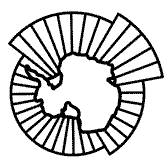Resultados de la búsqueda
-
Catches of target species in the Convention Area
data reported to 14 September 2016. Closures of fishery management areas implemented by the Secretariat ...
Meeting Document : SC-CAMLR-XXXV/BG/01 : Autor(es): CCAMLR Secretariat
-
e-sc-40-a6.pdf
... -EMM-2019/11 and 2019/10, including spatial and seasonal differences in penguin distribution, temporal ... Peninsula. In the paper, the authors noted that a simple reconditioning of the model of WG-EMM-2019/11 to ... discussions of WG-EMM-2019/10 and 2019/11 it had noted that the exact temporal and spatial scale of the ... -EMM-2019/11 and reiterated the confidence held by the paper’s authors that the analysis had plausibly
 application/pdf attached to:WG-EMM-2021
application/pdf attached to:WG-EMM-2021Meeting Report : WG-EMM-2021
-
Comentarios y propuestas respecto del desarrollo de mecanismos para la ordenación de la pesquería de kril en el área de la Convención de la CCRVMA
-sc-xxxiv-11.docx Approval: Approved Secretariat Workflow Status: Content Approved ...
Meeting Document : SC-CAMLR-XXXIV/11 : Autor(es): Делегация Российской Федерации
-
e-cc-xxxv.pdf
... , noting that in the current fishing season, up to 14 September 2016, 11 vessels fished in at least one of ... ......................................................................... 10 Report of the Scientific Committee ........................................................ 11 ... Harvested species ........................................................................... 11 Krill ... resources ........................................................................... 11 Feedback
 application/pdf attached to:CCAMLR-XXXV
application/pdf attached to:CCAMLR-XXXVMeeting Report : CCAMLR-XXXV
-
e-sc-40-a5.pdf
... assessment. Diagnostic plots for a partial update of the 2021 assessment model (WG-SAM-2021/14) and a stock ... . Other business 11.1 WG-SAM-2021/11 presented an examination of fishery data collected by Russian
 application/pdf attached to:WG-SAM-2021
application/pdf attached to:WG-SAM-2021Meeting Report : WG-SAM-2021
-
VARIABILITY IN KRILL BIOMASS LINKS HARVESTING AND CLIMATE WARMING TO PENGUIN POPULATION CHANGES IN ANTARCTICA
Abstract: The West Antarctic Peninsula (WAP) and adjacent Scotia Sea support abundant wildlife populations, many of which were nearly extirpated by humans. This region is also among the fastest-warming areas on the planet, with 5–6 °C increases in mean winter air temperatures and associated
Meeting Document : WG-EMM-11/P1 : Autor(es): W.Z. Trivelpiece, J.T. Hinke, A.K. Miller, C.S. Reiss, S.G. Trivelpiece and G.M. Watters
-
ADÉLIE PENGUIN SURVIVAL: AGE STRUCTURE, TEMPORAL VARIABILITY AND ENVIRONMENTAL INFLUENCES
Abstract: The driving factors of survival, a key demographic process, have been particularly challenging to study, especially for winter migratory species such as the Adélie penguin (Pygoscelis adeliae). While winter environmental conditions clearly influence Antarctic seabird survival, it has
Meeting Document : WG-EMM-11/P4 : Autor(es): L. Emmerson and C. Southwell
-
WILL KRILL FARE WELL UNDER SOUTHERN OCEAN ACIDIFICATION?
Abstract: Antarctic krill embryos and larvae were experimentally exposed to 380 (control), 1000 and 2000 μatm pCO2 in order to assess the possible impact of ocean acidification on early development of krill. No significant effects were detected on embryonic development or larval behaviour at 1000
Meeting Document : WG-EMM-11/P6 : Autor(es): S. Kawaguchi, H. Kurihara, R. King, L. Hale, T. Berli, J.P. Robinson, A. Ishida, M. Wakita, P. Virtue, S. Nicol and A. Ishimatsu
-
OCEAN-BOTTOM KRILL SEX
Abstract: For the first time the entire sequence of the mating behaviour of Antarctic krill (Euphausia superba) in the wild is captured on underwater video. This footage also provides evidence that mating can take place near the seafloor at depths of 400–700 m. This observation challenges the
Meeting Document : WG-EMM-11/P7 : Autor(es): S. Kawaguchi, R. Kilpatrick, L. Roberts, R.A. King and S. Nicol
-
DISCRIMINATION OF ENVIRONMENTAL VARIABLES THAT INFLUENCE THE CATCH PER UNIT EFFORT: THE CASE OF THE ANTARCTIC KRILL FISHERY
Abstract: The use of the catch per unit effort (CPUE) as an index of abundance usually requires a standardization process consisting of isolating all those exogenous factors from temporal variations in abundance from the CPUE time-series. These exogenous factors include those generated by
Meeting Document : WG-EMM-11/P3 : Autor(es): J.C. Quiroz, R. Wiff, M.A. Barrientos and F. Contreras

